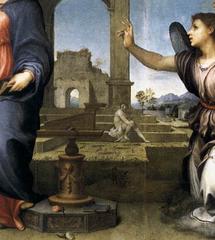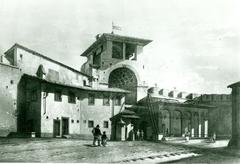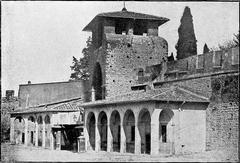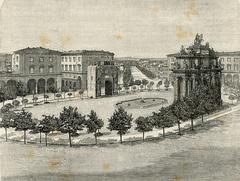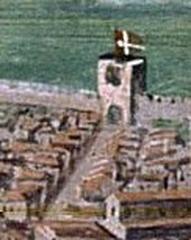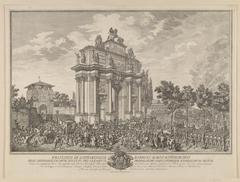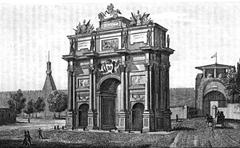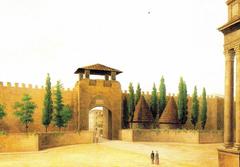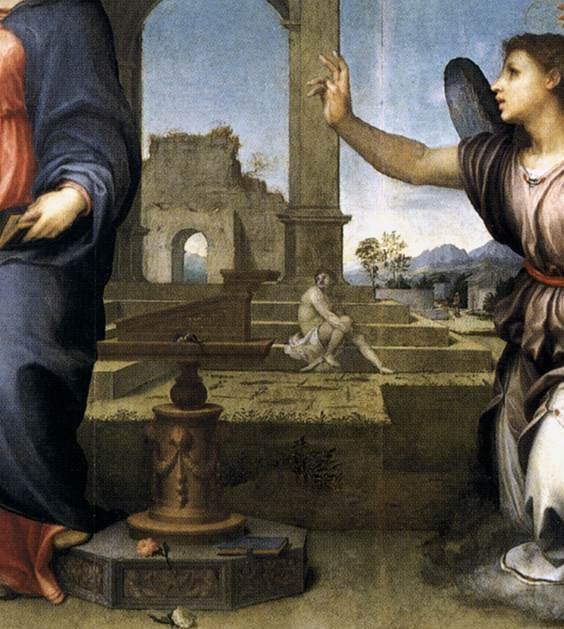
San Gallo Gate Florence: Visiting Hours, Tickets, and Historical Sites Guide
Date: 15/06/2025
Introduction: The Legacy of Porta San Gallo
Porta San Gallo, or San Gallo Gate, stands as one of Florence’s most iconic medieval landmarks. Located at the northern edge of the city in the lively Piazza della Libertà, this imposing gate was integral to Florence’s 14th-century defensive system. Designed by the renowned architect Arnolfo di Cambio between 1284 and 1327, it once controlled access along Via San Gallo, the principal route to Bologna and the Mugello region. Today, Porta San Gallo remains a proud symbol of Florence’s military ingenuity, artistic heritage, and urban transformation, offering visitors a unique opportunity to step into the city’s storied past (Museo Firenze, architectureofcities.com).
Historical Overview: From Medieval Fortress to Modern Landmark
Medieval Construction and Strategic Role
Porta San Gallo was constructed as part of Florence’s final circuit of defensive walls, underlining its significance as the city’s northern gate. Its robust stonework, pointed Gothic arch, and crenellated battlements reflect the military priorities of medieval Florence. The gate derives its name from the adjacent Church and Monastery of San Gallo, established in the 11th century by Vallombrosan monks; both structures were later demolished in the 16th century to bolster the city’s defenses during periods of siege (Florence Inferno).
Civic and Ceremonial Importance
Beyond defense, Porta San Gallo played a prominent civic role. It was the site of ceremonial entries for visiting dignitaries, such as Emperor Henry VII in 1312—an event memorialized by a Latin inscription above the arch (Visit Florence). The gate’s heraldic carvings, including the Florentine red lily (giglio) and the Marzocco lion, reinforce its status as a symbol of the city’s independence and communal pride.
Architectural and Artistic Features
The gate is built of pietra forte sandstone and features a wide pointed arch flanked by sturdy towers. While much of the original interior decoration has faded over time, the structure once displayed frescoes and religious motifs, including a Madonna and Child attributed to Andrea della Robbia (now replaced by a copy for conservation purposes). The original fortified doors, reinforced with iron, emphasized the gate’s defensive role (Museo Firenze).
Renaissance and Modern Transformations
During the 16th century, Florence’s fortifications were adapted to withstand new military technologies. The gate’s neighboring convent was demolished as part of these upgrades, reflecting the shifting balance between defense and urban development (The Florentine). In the 19th century, as Florence expanded and became the capital of unified Italy, much of the medieval walls were demolished. Porta San Gallo survived, thanks to its historical and architectural value. Restoration efforts in the 20th and 21st centuries have preserved its structure and enhanced its role as a cultural landmark.
Social and Literary Significance
The area around Porta San Gallo was historically vibrant, home to social gatherings and literary references. Boccaccio’s “Decameron” references the nearby Mugnone river, once a moat, in stories set just outside the gate. The vicinity was also known for the illustrious Strozzi villa, associated with Renaissance intrigue and social life (Wikipedia). The gate’s presence in literature and daily life cements its place in Florence’s collective memory.
Visiting Porta San Gallo: Practical Information
Location and How to Get There
- Address: Piazza della Libertà, 50129 Florence, Italy
- Walking: About 15 minutes north of the Duomo via Via Cavour or Via San Gallo
- Public Transport: Multiple ATAF bus lines stop at Piazza della Libertà, connecting to Santa Maria Novella station and other districts
- Car: Limited parking due to ZTL (limited traffic zone); public transport is recommended
Visiting Hours and Tickets
- Hours: The gate is an open-air monument, accessible 24/7 for exterior viewing
- Tickets: No entry fee or tickets required for exterior access; interior spaces are generally closed to the public
- Guided Tours: Included in some city wall and historical walking tours; booking in advance is recommended during peak seasons (FlorenceTips.com, Full Suitcase)
Accessibility
The area around Porta San Gallo is flat and has wide sidewalks, making it generally accessible to visitors with mobility challenges. Some cobblestone surfaces may be uneven, so those with specific needs should plan accordingly.
Facilities
There are no dedicated visitor facilities at the gate itself, but nearby cafés, restaurants, benches, and public gardens provide amenities for visitors.
Safety and Photography
Piazza della Libertà and the gate area are safe and well-frequented. Photography is encouraged, especially during early morning or late afternoon for optimal lighting. Please avoid climbing or defacing the monument.
What to See Near Porta San Gallo
- Piazza della Libertà: Lively square with 19th-century monuments, gardens, and the Triumphal Arch of the Lorraine
- Via San Gallo: Historic street with artisan shops, local eateries, and a vibrant atmosphere
- Accademia Gallery: Home to Michelangelo’s David, about a 10-minute walk south
- Parco delle Cascine: Florence’s largest public park, ideal for a stroll
- Other City Gates: Explore Florence’s network of historic gates, such as Porta Romana and Porta San Niccolò, for a thematic tour (architectureofcities.com)
Events and Community Life
While Porta San Gallo is not a regular event venue, its central location means it often serves as a backdrop for city festivals, markets, and parades. Major festivities like the Festa di San Giovanni spill into the area, providing cultural vibrancy (Visit Florence).
Preservation and Urban Context
Porta San Gallo’s survival through centuries of urban change is a testament to Florence’s commitment to heritage preservation. The gate now stands as a “negative print” of the lost city walls—an anchor for collective memory and a focal point of the city’s modern landscape (The Florentine).
Frequently Asked Questions (FAQ)
Q: What are the visiting hours for Porta San Gallo?
A: The gate is accessible outdoors 24/7 for exterior viewing; its interior is not open to the public.
Q: Is there an entrance fee?
A: No, the site is free to visit.
Q: Are guided tours available?
A: Yes, several walking tours of Florence’s historical sites include Porta San Gallo. Booking in advance is recommended.
Q: Is the site accessible for people with disabilities?
A: The area is generally accessible, though some cobblestone surfaces may be uneven.
Q: What are the best ways to reach Porta San Gallo?
A: The gate is within walking distance of the Duomo and served by several bus lines stopping at Piazza della Libertà.
Final Tips and Summary
Porta San Gallo endures as a captivating reminder of Florence’s medieval prowess and evolving urban identity. Its striking Gothic architecture, ceremonial history, and survival amidst modern expansion make it a must-see for anyone exploring Florence’s historical sites. With free, round-the-clock access and proximity to key attractions, it’s easily included in a walking itinerary. For a deeper understanding, consider joining a guided tour and timing your visit for spring or autumn, when the city is at its most pleasant.
Download the Audiala app for interactive maps, guided audio tours, and the latest updates on Florence’s cultural events. For additional resources and inspiration, visit FlorenceTips.com and Full Suitcase.
Sources and Official Links
- Museo Firenze, n.d., Porta San Gallo (Museo Firenze)
- Florence Inferno, n.d., Porta San Gallo (Florence Inferno)
- Visit Florence, n.d., Porta San Gallo (Visit Florence)
- architectureofcities.com, n.d., Florence City Walls and Gates (architectureofcities.com)
- The Florentine, 2017, Florence Walls History (The Florentine)
- FlorenceTips.com, n.d., Florence Travel Tips (FlorenceTips.com)
- Full Suitcase, n.d., Florence Best Things to Do (Full Suitcase)
- The Florentine, 2022, Gatecrashing Florence Historic Porte (The Florentine)
